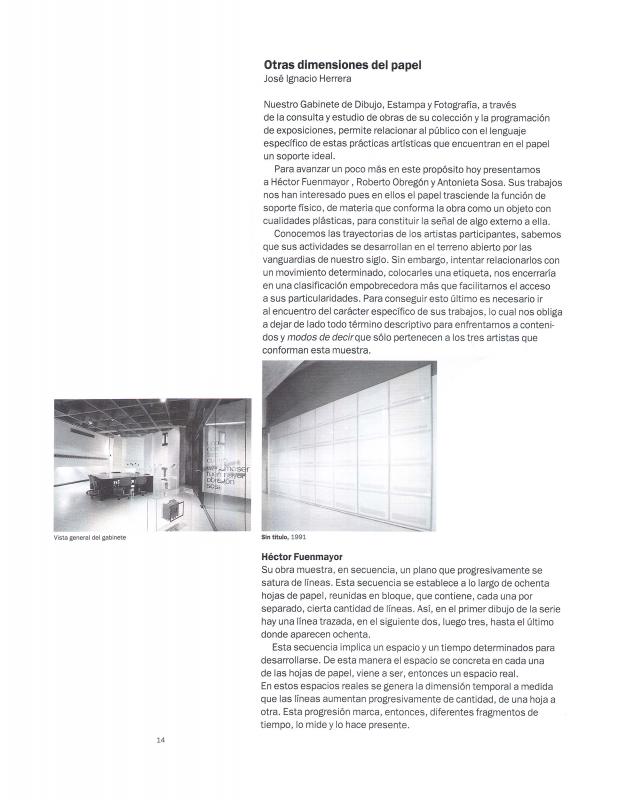In this critical essay, curator Rina Carvajal tries not to identify the four artists addressed (Alfred Wenemoser, Héctor Fuenmayor, Roberto Obregón, and Antonieta Sosa) with a specific tendency—which is significant since Venezuelan critics and the general public once saw those four artists as the pioneers of conceptual art and now see them as its major exponents. When this curatorial text was written (1991), those four artists were well-established figures. According to Carvajal, their formulations took shape in the seventies largely outside the confines of mainstream institutions.
Carvajal analyzes the artists’ poetics and “works in installation” on the basis of the methodology and hermeneutics of the visual arts; her perspective is formal, psychological, and aesthetic. Carvajal identifies traits shared by the four artists, such as “open and multi-referential” proposals and a “critical and reflexive relationship to their languages.” While she finds characteristics in their work usually associated with Conceptualism (work as process, interest in the passage of time, formal simplicity, the centrality of reflection, and a certain conception of the emotional), she never places them in “the conceptual” category. This is important because it means placing those artists’ work in a broad, as opposed to local, context, resisting a tendency in Venezuelan criticism to unify criteria in relation to art movements, a tendency that often leads to a reduction of the diverse contemporary art scene.
“Otras dimensiones del papel” [ICAA digital archive (doc. no. 1065785)], the text by José Ignacio Herrera featured in the same catalogue, analyzes the works on paper or involving paper included in the show.

